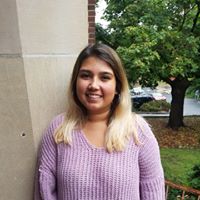I was recently watching a documentary on prescription medication and was shocked by some of the information shared. The documentary highlighted the connections between addictive prescribed medications, the national opioid crisis, overprescription rates, and the profit of big pharma. According to the Centers for Disease and Control Prevention, nearly half of the overdose deaths in 2017 were due to opioids. While I had heard the term “opioid epidemic” mentioned, I had not realized that it is easier to develop an addiction to these drugs than I once thought and that access to prescribed opioids like perhaps oxycodone (OxyContin), hydrocodone (Vicodin), and codeine plays a big role. The scope of this issue means that it affects us all.
It isn’t uncommon for physicians to prescribe opioids to individuals with chronic pain or to people after a medical procedure because these medications are effective at numbing the pain and providing relaxing effects. According to the National Institute on Drug Abuse (NIDA), while opioids prescribed by a physician are generally safe when taken for a short time, regular use – even when used as prescribed by a physician – can lead to dependence. With continued use and misuse, this can lead to addiction to opioid pain medications, possible overdose, and death. The rates of prescription misuse, the dangers and prevalence of opioids, and the high rates of overdoses and deaths can seem overwhelming or frightening, but I think that is why having conversations surrounding these topics is so incredibly important.
According to NIDA, after alcohol and marijuana, prescription and over the counter drugs are the most commonly abused drugs among college-age individuals (18-24). These drugs are used for a variety of reasons such as getting high, to relieve pain, and in the hopes of performing better academically. At the U of I, the National College Health Assessment goes out to students and collects data on several health indicators. From this data, we know that prescription medication misuse on our campus is comparable to, but a little higher than national rates and that about fifteen percent of U of I students report having used prescription drugs in the last year that were not prescribed to them.
If you are like me and was surprised by some of this information, you may be asking yourself what you can do to help address this issue. An easy way to do that is to start local, join the conversation, and look at what is already in your medicine cabinet. Here on campus, Vandal Health Education has partnered with the Moscow Police Department to provide a Prescription Drug Take-Back event on Oct. 24 from 1 a.m. to 1 p.m. at the Commons Plaza. This is an opportunity to bring leftover prescription medication for safe disposal and receive a free donut as a thank you. If you don’t have prescription medication to dispose of, you can still participate in the Rx Trivia at the event to receive a donut or additional prize.

If you or someone you know is struggling with substance use, there are several resources available. The Counseling & Testing Center provides free and confidential counseling for students at their location in Mary E Forney Hall Room 306. You can walk in or call 208-885-6716 to set up an appointment. Employees are eligible for free and confidential counseling through the Employee Assistance Plan and can call 208-885-3697 for more information.
By: Vandal Health Education Peer Educator Emily Navarette
